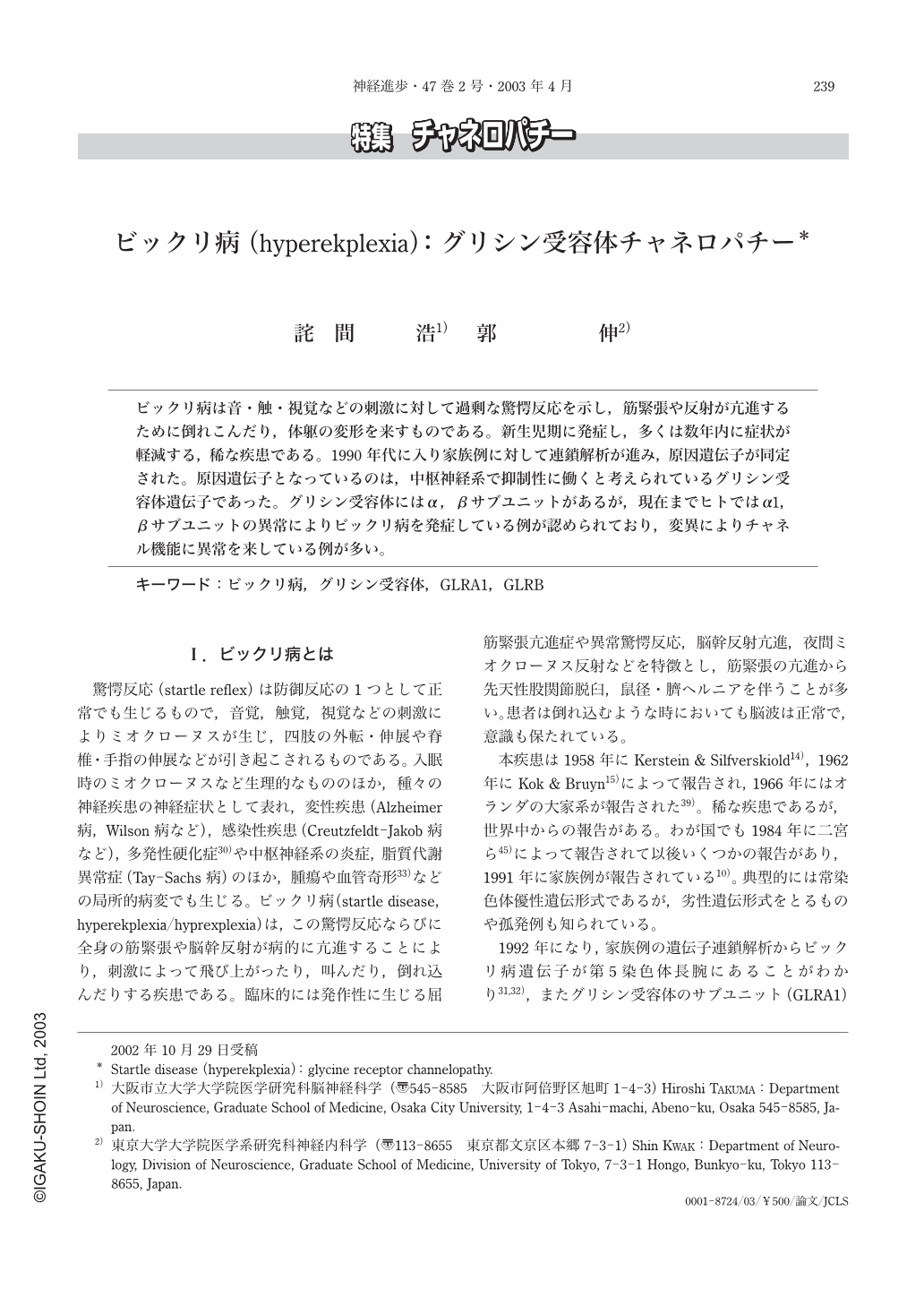Japanese
English
- 有料閲覧
- Abstract 文献概要
- 1ページ目 Look Inside
ビックリ病は音・触・視覚などの刺激に対して過剰な驚愕反応を示し,筋緊張や反射が亢進するために倒れこんだり,体躯の変形を来すものである。新生児期に発症し,多くは数年内に症状が軽減する,稀な疾患である。1990年代に入り家族例に対して連鎖解析が進み,原因遺伝子が同定された。原因遺伝子となっているのは,中枢神経系で抑制性に働くと考えられているグリシン受容体遺伝子であった。グリシン受容体にはα,βサブユニットがあるが,現在までヒトではα1,βサブユニットの異常によりビックリ病を発症している例が認められており,変異によりチャネル機能に異常を来している例が多い。
Hyperekplexia(startle disease)is a rare disorder typically with generalized muscular rigidity and abnormally exaggerated startle response to auditory, tactile and visual stimuli. These responses result in frequent injury due to unpredictable jumps or falls without protection. Symptoms are seen in the first neonatal year, and slowly improve within a few years but may persist through life. Linkage analysis after 1990s in many dominantly and recessively inherited families showed that causative genes were glycine receptorα1 subunit(GLRA1)andβsubunit(GLRB). Many of the point mutations and deletions in subunits altered chloride channel properties of mutated glycine receptors.

Copyright © 2003, Igaku-Shoin Ltd. All rights reserved.


